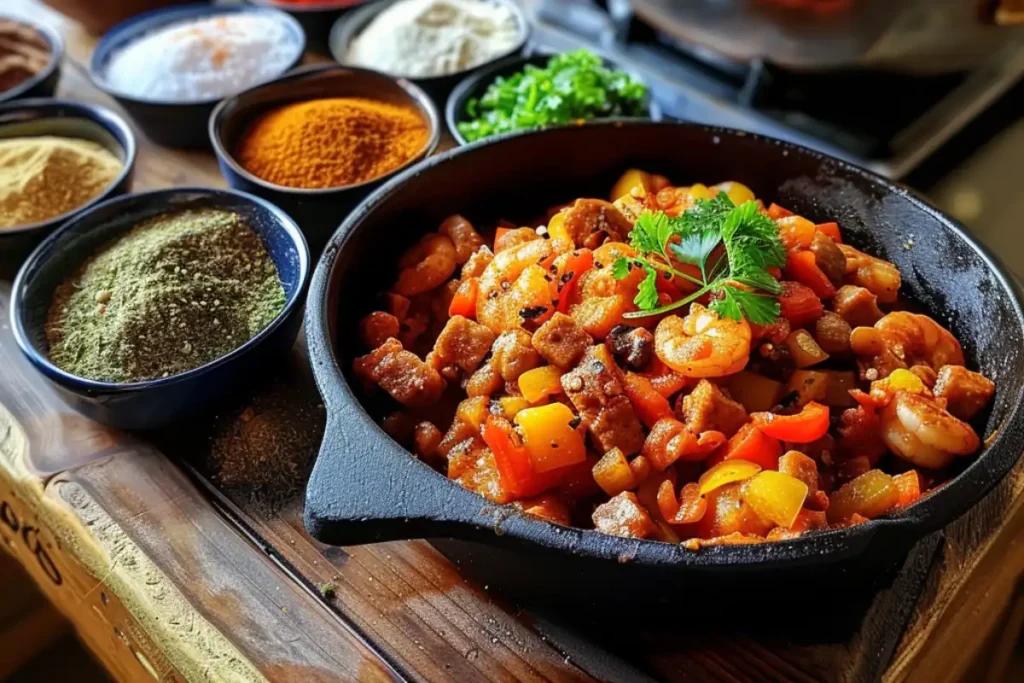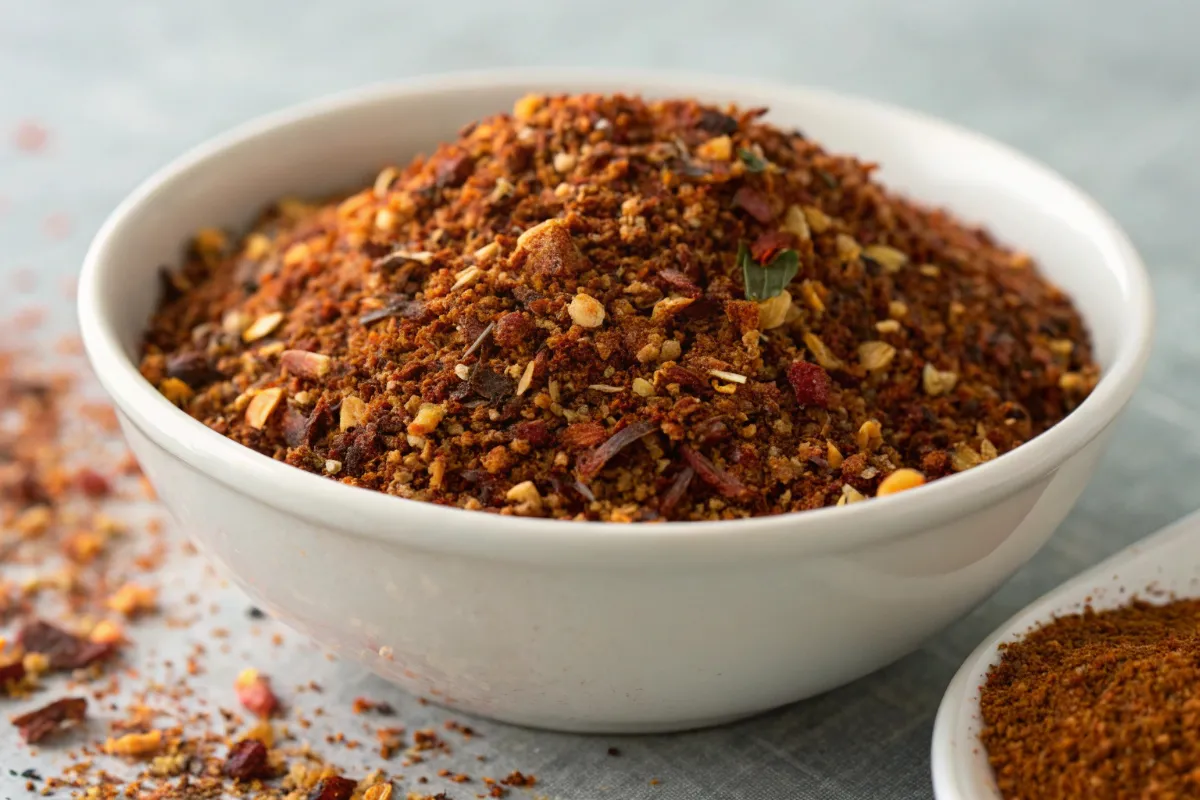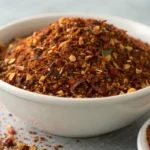Jambalaya seasoning is the key to unlocking the bold, authentic flavors of this iconic Louisiana dish. Whether you’re making Cajun or Creole jambalaya, the right seasoning blend brings together the rich, savory spices that make jambalaya unforgettable. This guide will walk you through everything you need to know about jambalaya seasoning, from key ingredients to making your own perfect spice blend.
In this comprehensive guide, we’ll explore the ins and outs of jambalaya seasoning, how you can create your own seasoning blend at home. Whether you’re a seasoned chef or a home cook looking to perfect your jambalaya recipe, this article will give you all the information you need.
Table of Contents
Key Ingredients in Jambalaya Seasoning

The perfect jambalaya seasoning is a balanced blend of spices and herbs, each contributing its unique flavor to the dish. Below, we’ll dive deeper into the key ingredients that make up this blend.
1. Paprika
Paprika is a staple in many Louisiana dishes, and it plays an important role in jambalaya seasoning. It adds a subtle sweetness and helps give the dish its vibrant red color. Depending on the type of paprika used (e.g., sweet, hot, or smoked), you can adjust the overall flavor of your seasoning blend.
For a deeper understanding of how to use different types of paprika in your cooking, check out this guide on How to Use Paprika in Cooking.
2. Cayenne Pepper
Cayenne pepper is the heat source in jambalaya seasoning. You can adjust the amount of cayenne depending on your tolerance for spice, but it’s essential for giving jambalaya its characteristic kick. In Cajun seasoning, the cayenne is more pronounced, while Creole seasoning uses it more sparingly.
3. Garlic and Onion Powder
These two ingredients form the aromatic backbone of the seasoning blend. They add depth to the dish, enhancing the natural flavors of the proteins and vegetables in the jambalaya. Both garlic and onion powder are essential for creating that savory base.
4. Thyme and Oregano
These herbs are more prominent in Creole seasoning but can also be used in Cajun seasoning. Thyme and oregano offer an herbal freshness that balances out the heat from the cayenne pepper. Together, they create a more complex flavor profile.
5. Black Pepper and White Pepper
Both types of pepper add different layers of heat. Black pepper provides a sharp, pungent spice, while white pepper offers a milder, more earthy heat. Using both in combination creates a well-rounded seasoning blend.
6. Bay Leaves
Bay leaves are often used in the cooking process to add a subtle herbal aroma. They are typically removed before serving, but their flavor is integral to creating depth in the dish.
Optional Additions
- Cumin: For a slight smoky note, you can add cumin to your seasoning blend.
- Smoked Paprika: For a deeper, smokier flavor, consider using smoked paprika in place of regular paprika.
- Chili Powder: If you prefer extra heat, adding chili powder can elevate the spiciness of your jambalaya.
For those who enjoy bold and flavorful dishes, this Creole Pasta recipe is a delicious way to explore the depth of Creole seasoning beyond traditional jambalaya.
How to Make Your Own Jambalaya Seasoning
One of the best ways to ensure your jambalaya turns out just the way you like it is to make your own seasoning blend. This not only allows you to control the level of heat and herbs but also ensures that you’re using the freshest ingredients.
Ingredients:
- 2 tablespoons paprika
- 1 tablespoon cayenne pepper (adjust based on heat preference)
- 1 tablespoon garlic powder
- 1 tablespoon onion powder
- 2 teaspoons dried thyme
- 2 teaspoons dried oregano
- 1 teaspoon black pepper
- 1 teaspoon white pepper
- 1 tablespoon salt (optional)
Instructions:
- Mix all the ingredients in a bowl until they are well combined.
- Store the mixture in an airtight container in a cool, dry place.
- Use 1–2 tablespoons per batch of jambalaya (4–6 servings).
Customizing Your Blend
One of the best parts about making your own jambalaya seasoning is the ability to customize it. If you prefer more heat, simply increase the amount of cayenne pepper. If you want a more herbaceous blend, add more thyme and oregano.
For other seasoning ideas, consider experimenting with blends like Buffalo Wing Seasoning, which provides a spicy and flavorful kick to any dish.
Choosing Store-Bought Jambalaya Seasoning 🌶️
For convenience, store-bought jambalaya seasoning can be a great option, but not all blends are equal. Here’s what to look for:
- Quality Ingredients: Opt for natural spices without preservatives.
- Sodium Levels: Choose low-sodium or salt-free blends for control.
- Heat Level: Pick mild or spicy based on your preference.
A good blend enhances flavor without unnecessary additives!
For another meal that balances robust flavors, explore Dutch Oven Chicken and Rice, which uses a similar combination of spices and herbs to bring the dish together.
Cajun Jambalaya vs. Creole Jambalaya

Though the ingredients in Cajun and Creole jambalaya may look similar, there are important differences in how they are seasoned.
Cajun Jambalaya
- More Spice: Cajun jambalaya typically has more heat due to the heavier use of cayenne pepper. It focuses on bold, rustic flavors, often omitting tomatoes.
- Simpler Seasoning: While it still uses paprika, garlic, and onion powder, the herbs are usually minimized in favor of a more straightforward spice mix.
- No Tomatoes: Traditional Cajun jambalaya does not include tomatoes, relying on the seasoning and proteins for flavor.
Creole Jambalaya
- Balanced Flavor: Creole jambalaya uses a combination of spices and herbs, including thyme and oregano, to create a balanced flavor. It’s often less spicy than Cajun jambalaya.
- Tomatoes: The addition of tomatoes in Creole jambalaya adds a layer of sweetness and acidity, which complements the herb-forward seasoning blend.
- More Herbs: In contrast to Cajun jambalaya, Creole jambalaya includes a more herbaceous flavor profile, thanks to the use of thyme, oregano, and sometimes basil.
The art of making a great jambalaya comes down to getting the seasoning just right. Whether you lean toward the spicier Cajun style or prefer the herbal complexity of Creole seasoning, understanding the balance between the key ingredients is essential. By experimenting with different combinations of paprika, cayenne pepper, garlic powder, and herbs, you can create a seasoning blend that’s uniquely suited to your tastes.
For more ideas on how to customize your seasoning blends for other meals, check out Homemade Pot Roast Seasoning, which provides a flavorful, customizable approach to seasoning hearty dishes.
(FAQs)
What is the best seasoning for jambalaya?
- The best seasoning for jambalaya is a blend of paprika, cayenne pepper, garlic powder, onion powder, and herbs like thyme and oregano. You can adjust the ratios depending on whether you prefer a Cajun or Creole flavor profile.
Can I substitute Cajun seasoning for jambalaya seasoning?
- Yes, you can substitute Cajun seasoning for jambalaya seasoning, but keep in mind that Cajun seasoning is typically spicier. If you want a milder option, consider using Creole seasoning.
How spicy should jambalaya seasoning be?
- The level of spice in jambalaya seasoning is largely a matter of personal preference. Cajun jambalaya is traditionally spicier, while Creole jambalaya has a more balanced heat with a stronger emphasis on herbs.
What herbs can I use in jambalaya?
- Common herbs used in jambalaya seasoning include thyme, oregano, and bay leaves. These herbs add an earthy, herbal note that balances the dish’s bold flavors.
Jambalaya Seasoning
This Jambalaya Seasoning blend brings bold Creole and Cajun flavors to your homemade jambalaya! With a perfect mix of smoky, spicy, and savory spices, this seasoning enhances rice, meats, and seafood for an authentic Louisiana-style dish.
- Prep Time: 5 minutes
- Total Time: 5 minutes
- Category: Seasoning & Spices
Ingredients
For the Jambalaya Seasoning:
- 1 tbsp paprika (smoked or sweet)
- 1 tbsp garlic powder
- 1 tbsp onion powder
- 2 tsp dried oregano
- 2 tsp dried thyme
- 1½ tsp salt
- 1 tsp black pepper
- 1 tsp cayenne pepper (adjust for spice preference)
- 1 tsp white pepper
- 1 tsp ground mustard
- ½ tsp ground cumin
- ½ tsp celery salt
Instructions
-
Mix the Seasoning:
- In a small bowl or spice jar, combine all spices.
- Stir or shake well to ensure even distribution.
-
Use for Jambalaya:
- Add 1 to 2 tbsp of seasoning per 6 servings of jambalaya.
- Adjust to taste for more spice or depth.
-
Store for Later:
- Transfer to an airtight container and store in a cool, dry place for up to 6 months.
Notes
- For a salt-free version, omit salt and add to taste when cooking.
- For extra heat, increase cayenne pepper or add crushed red pepper flakes.
- For a smoky flavor, use smoked paprika instead of sweet paprika.



2 thoughts on “Jambalaya Seasoning”